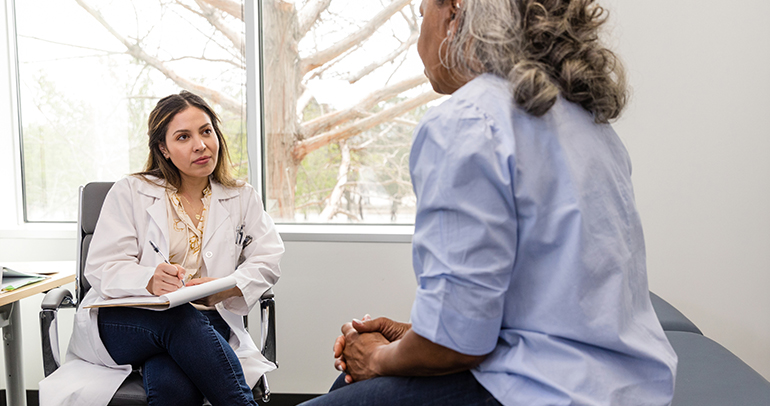
“The best barometer of rising inequality in America is no longer income. It is life itself.”
—The Washington Post
In 2020, The Washington Post found people living in the poorest areas of the United States were 61% more likely to die than those living in the wealthiest areas. A study published in JAMA found that the Black population in the US experienced more than 1.63 million more deaths and more than 80 million excess years of life lost compared with the White population over a recent 22-year period. These rising economic and racial mortality gaps are the result of decades of health inequity in this country.
More than a moral dilemma, health inequity catalyzes rising costs for consumers, healthcare systems, federal and state governments, and healthcare insurers. Research from the National Institutes of Health (NIH) estimates annual costs of health inequities in the US to be $450 billion per year. According to Deloitte, health inequities could cost the US $1 trillion or more in annual healthcare spending by 2040 if left unchecked. Not only is addressing health inequities the right thing to do, but the financial impact of health inequities is staggering and unsustainable.
Many health organizations are addressing health inequities by investing in community programs, broadening benefits to address specific needs, and conducting and sharing health equity research with a variety of populations. Unfortunately, with so many disadvantaged populations, opportunities to reduce disparities abound. But with so many health equity problems to solve, it’s challenging to know the best place to start.
Here are five steps health-focused organization researchers can follow to strengthen their research programs and begin to close the health equity gap.
1. Gain Buy-In Through Strategic Alignment
Market researchers are no strangers to the challenges of securing research budget. The first step in funding and conducting effective research is to identify which strategic objectives in your organization tie directly or indirectly to health equity. Then, link your research and eventual outcomes to those strategic objectives.
If your organization’s health equity strategy isn’t easily accessible, you’ll need to investigate. Start by conducting informational interviews and reviewing company documentation. It’s not uncommon that multiple teams across various departments may already be tackling health equity issues (and unknowingly be duplicating efforts). Seek out data teams to learn what analyses have been conducted previously. Old research reports, past town halls, and company white papers can offer a wealth of information. A clear clue to what matters most in your organization (at least for 15% of US healthcare companies, according to Bain & Company) may emerge from analyzing company compensation plans: are salaries or bonuses tied to any health equity outcomes? For example, SCAN Health Plan ties 10% of its senior managers’ bonuses to reducing the disparity in medication adherence among Black, Hispanic and White members.
Linking your health equity research program to strategic mandates and tying outcomes to those objectives not only provides you with clear study design direction but also sets the stage to ensure stakeholder buy-in (and budget) down the road.
2. Conduct Secondary Analysis
If you don’t see specific equity-related strategic objectives or a strong presence of health equity research in your organization to build upon, it may be time to pioneer.
Start with diagnostics: assess the makeup and needs of your customers (or members, patients). Existing data may be available from previous diagnostic assessments, or you can conduct your own assessment. Additional data sources, such as claims data, hospital admissions, Consumer Assessment of Healthcare Providers and Systems (CAHPS) scores, Healthcare Effectiveness Data and Information Set (HEDIS) measures, etc., can also provide clues into what your customers need most and where differences among customer subgroups pop.
External reports and resources like research association task forces, DEI think tanks or advisory teams can help round out and validate your findings.
3. Define Your Audience and Narrow Your Objectives
While it’s tempting to want to resolve health inequities for all, it’s best to focus on two to three core sub-objectives in your research. In partnership with others, work to understand the breadth or incidence of the problems uncovered in step 2. For instance, based on data collected in your diagnostic phase, you might find that Black women have a higher mortality rate in your hospital compared with mothers of other races—and that this is particularly linked to labor and delivery admissions. Based on this, you might narrow your audience to Black women and focus on maternal care.
Narrowing your research focus helps ensure that any solutions derived from the results are actionable and targeted (versus making more “blanketed recommendations” across multiple audiences or conditions). Solutioning for closing gaps in healthcare is far better than trying to find one-size-fits-all solutions.
4. Design With the End in Mind
Determine the outcomes you hope to achieve at the end of the study, and flesh out your research design around them. For example, if your goal is to close the gap on high blood pressure prevalence among Hispanic health plan members older than 65, an online survey design asking questions to a general member audience and cutting the data by demographics only gets you so far.
Questions of health inequity may require more sophisticated quantitative solutions, while understanding the nuanced experiences of customers may necessitate qualitative methods. Triangulation—using multiple research methods to explore a research question or hypothesis in the same study—is our preferred approach to understanding the nature of the problem, size it adequately, and identify targeted solutions. Don’t be afraid to think outside of the box with innovative recruitment ideas, community partnerships, and additional internal datasets that could link to your current research and help make your desired outcomes a reality.
5. Collaborate to Innovate
Finally, never ever go into health equity research alone. Studies show that the most successful research programs in reducing health inequities are often in collaboration with multiple minds (for a great read on how diverse teams fuel innovation, check out The Medici Effect by Frans Johansson). Just a couple of examples of healthcare companies partnering in their approach to health equity research and solutions include:
- Humana and Humana Foundation: collaborated with University of Louisville to establish the Health Equity Innovation Hub, which conducts research aimed at advancing health equity for people pushed to the margins.
- Blue Cross and Blue Shield of Minnesota and Blue Plus: partnered with a food bank and a market platform to research how food insecurity impacts Black and Indigenous mothers and infants.
At Escalent, we’re dedicated to that same spirit of collaboration when helping our clients reduce healthcare inequities. Contact me or our other healthcare industry experts to learn more about the exciting work the Escalent family is doing in this space, or send me an email to work with our DEI Think Tank team. Let’s talk about how we can move the needle on health equity together.









